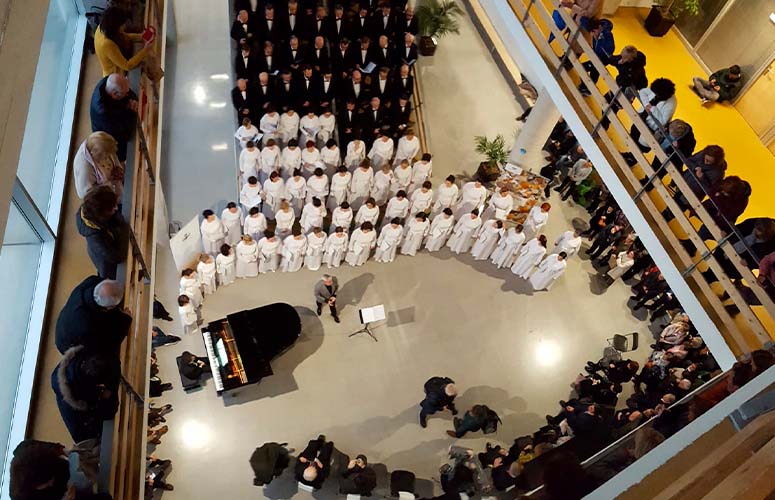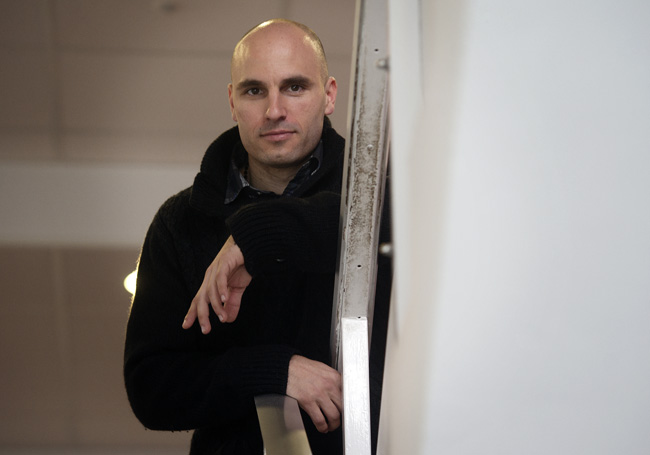A new study by the lecturer Jordan Santos-Concejero of the UPV/EHU’s Department of Physical and Sports Education rejects the conclusions of previous studies about the imminence of a men’s record below two hours in the marathon event. The research, conducted together with Ross Tucker of the University of the Free State, Bloemfontein, South Africa, has been published by the International Journal of Sports Physiology and Performance.
-

In memoriam: Arturo Muga
-

Azukrea eta edulkoratzaileak. Zer jakin behar dut?
-

Athletic zuri ta gorria, zu zara nagusia, baina zertan? Gizonezko futbol profesionalaren gaitasun (im)mobilizatzaileari buruzko hausnarketa soziologikoa
-

Iñigo Argomaniz sustatzaileak eta Eli Arabaolaza ikertzaileak irabazi dute XXIII. Donostiako Orfeoia-UPV/EHU Saria
-

Unibertsitateko elikadura ingurune osasungarriago baten bila
Marathon record in sight?
A study by the UPV/EHU-University of the Basque Country refutes that the two-hour marathon time barrier can be lowered in the short term
- Research
First publication date: 21/12/2017

The two-hour marathon barrier is one of the hot topics in the world of high performance in sports. The current world record (2:02:57 by the Kenyan Dennis Kimetto in Berlin on 28 September 2014), which finds itself threatened year after year (in 2016, the Ethiopian Kenenisa Bekele in Berlin, and the Kenyan Eliud Kipchoge in London ended up at least 10 seconds behind), prompts one to think that the question is not so much whether the barrier can be broken, but rather “when” it will be broken. In this respect, there are various studies that attempt to forecast whether breaking this barrier is really as close as it seems or whether, by contrast, it will take decades to reach this sporting milestone.
The study, now published by the International Journal of Sports Physiology and Performance, ‘The Unlikeliness of an Imminent Sub-2-Hour Marathon: Historical Trends of the Gender Gap in Running Events’, conducted by Dr Jordan Santos-Concejero of the UPV/EHU’s Department of Physical and Sports Education, together with Ross Tucker, of the University of the Free State, Bloemfontein, South Africa, refutes the conclusions of a previous paper whose authors confirmed that the world marathon record for women is the equivalent of a masculine record under two hours and that, therefore, the breaking of the two-hour barrier is imminent. Using the same methodology, the new study invalidates these conclusions.
Right now, various methods are used to predict the likelihood of a world record; they range from the use of mathematical models that analyse the historical progression of the best records (and which put the human limit between 1:59:37 and 2:01:53, depending on the methodology) to the analysis of physiological performance factors (which, for example, establish the “theoretical human limit” at 1:57:58).
Another trend in vogue is to compare the records between men and women. For example, a recent study by Hunter et al. (The two-hour marathon: What's the equivalent for women? Hunter SK, Joyner MJ, Jones AM. J Appl Physiol (1985). 2015 May 15;118(10):1321-3) compared the world records between men and women and concluded categorically that the women’s world record (2:15:25 by Paula Radcliffe in London on 13 April, 2003) is equivalent to a record below two hours for men, so the two-hour barrier could fall at any moment.
For their calculations the researchers assumed a hypothetical difference of 12-13% between men and women across all athletic events. This implies that the current men’s world record (the difference being barely 10% compared with the women’s record) would still have a margin for improvement as it would in percentage terms be “weaker” than the records for other distances. Yet according to Hunter et al., a record below two hours would put the difference between men and women for the marathon at 12.9% (i.e., within the proposed bracket), so it would be a matter of a short time before there is a big improvement in the men’s record.
Contested conclusions
However, the analysis of all the world records in athletics race events (from the 100 m right up to the marathon) conducted by Santos-Concejero and Tucker, refutes the conclusions. “Firstly, because the overall difference is not 12-13%, as proposed by Hunter et al., but barely 11%. Secondly, because the evolution in the men’s and women’s records allows one to see how the women’s records in race events are evolving faster than the men’s ones (the difference between men and women has gone from 11.7% in 1990 to barely 11% today). This could be due to the fact that they began to participate in sports later, they participate less and to other factors that cause their margin of improvement to be greater than that of men, whose athletic events have much greater depth,” stressed the researchers.
A sudden improvement in the men’s world marathon record of below two hours would go against all the trends and historical progression. Right now, the men’s marathon is the second “weakest” record in percentage terms with respect to women (after the 100-m record) and a record below two hours, by contrast, would turn it into a comparatively “stronger” record in the whole athletics programme. Furthermore, one has to bear in mind that the men’s record has improved over the last decade from 2:04:55 in 2007 to the current 2:02:57. This constitutes an improvement of 1.6% in 10 years, so it is difficult to consider an additional improvement of 2.4%, which is needed to break the two-hour barrier (or what boils down to the same thing, a 4%-improvement with respect to the 2007 record). It took 30 years (1984-2014) the last time to achieve a 4%-improvement in world marathon record, and the same thing has happened with other distances, such as the 100 m, in which it took 41 years to achieve a 4%-improvement (1968-2009).
These data appear to refute the conclusions of the study by Hunter et al. about the imminence of a men’s marathon record of below two hours. “On the basis of the historical differences between men and women and the analysis of the evolution in the records, it seems to be difficult to think it will be possible to break that two-hour barrier in comparable conditions in the short term as proposed by other authors,” they concluded.
Bibliographic reference
- The Unlikeliness of an Imminent Sub-2-Hour Marathon: Historical Trends of the Gender Gap in Running Events
- International Journal of Sports Physiology and Performance 12(8):1017-1022. 2017
- DOI: 10.1123/ijspp.2016-0634


